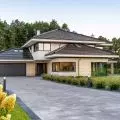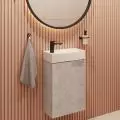Have you ever wondered what effect having a dog can have on the perception of space? Since long walks with my four-legged dog appeared in my daily schedule, I began to perceive elements of the city structure differently, and above all - green areas. Life, represented by the trotting on short legs mutt Burbon, verifies the policy of the authorities of Lodz regarding urban greenery, making a mockery of the repeated slogans.
How much greenery is there in Lodz?
"Hardly any city in Poland can boast so many green areas," he says. - emphasize the Lodz authorities on the official City Hall website. The thesis is as bold as it is unconfirmed by reality. Even if we do not compare ourselves with Sopot, where green areas occupy as much as 61 percent of the city's area (CSO data from 2017), or Gdynia (48 percent), we are still ahead of Warsaw, Poznan, Katowice... a total of thirty-five district cities.
Green areas occupy less than 18 percent of the city's area. The largest part of them (more than half of the total) are forests. Parks account for only 2.13 percent of the area of Lodz, and neighborhood greenery - 3.41 percent. It is worth noting that in recent years the amount of street greenery and, to a lesser extent, the number of green spaces has increased. What are the implications of this? For the Burbon mutt - not much. Rows of trees planted along streets and woonerfs, however desirable, are no substitute for a concentration of greenery in the form of a large square or park.
One of the pocket parks in Old Polesie in Lodz.
Photo: Błażej Ciarkowski
lawn available
On the website of the Green Expo, which will be held in Lodz in 2024, we can read that "even in the densely built-up city center one can find areas of greenery," which are the result of 19th-century factory owners who created parks and gardens - first private and then public. "There are a total of thirty-seven parks in Lodz". - emphasize the authors of the site created by the Lodz City Hall and conclude: "the people of Lodz have plenty of opportunities to spend a weekend among the greenery!".
Meanwhile, as Anka Pustkowska points out, "in Lodz, park accessibility for residents is, to put it mildly, at a low level. Especially in the Downtown area, you have to travel long distances to use them." For residents of Old Polesie, such as myself and Bourbon, this means a two-mile walk to the nearest park. Pocket parks, which, according to City Hall, "are becoming increasingly popular (...) thanks to the Green Polesie campaign," are not an alternative, both because of their small size and the specific way in which the area is laid out.
For a park is unequal to a park. Cobblestone or gravel paths will not replace a meadow, and a perennial bed - a lush lawn on which to sit or run. Observation of the behavior of users and the number of them in each place shows a simple relationship: the less "designed" a space is, the better.
Green wastelands in use
In the immediate vicinity of Manufaktura, on the border of Stare Polesie and Bałuty, are the Karski Gardens. Under the lofty name is a wild meadow cut by a path leading to the shopping center, as well as neglected playing fields surrounded by a few benches. Nevertheless, regardless of the time of day and weather, you can find people walking their dogs, kids playing ball and (inevitably) lovers of "under the cloud" consumption. Several years ago, the City presented plans to use the area for residential development. Strong opposition from residents and community activists, who published a counter-proposal in the form of a park project, caused the intention to be abandoned.
"Karski Gardens" - A neglected sports and recreational area and a wild "city meadow."
Photo: Błażej Ciarkowski
Slightly farther to the north stretches a wide meadow. It constitutes an area that in plans from the 1960s was intended for the construction of a two-lane roadway. The road was not built, while the area, overgrown with lush grass and clumps of shrubs, has become a place of recreation. Not only the mutt Burbon, who tirelessly dives into the greenery or runs with other dogs, finds a moment of respite there. On sunny days, picnic blankets are sometimes laid out on the wild lawn by families with children, and people come who want to quietly sink into reading or "catch" a little tan.











































